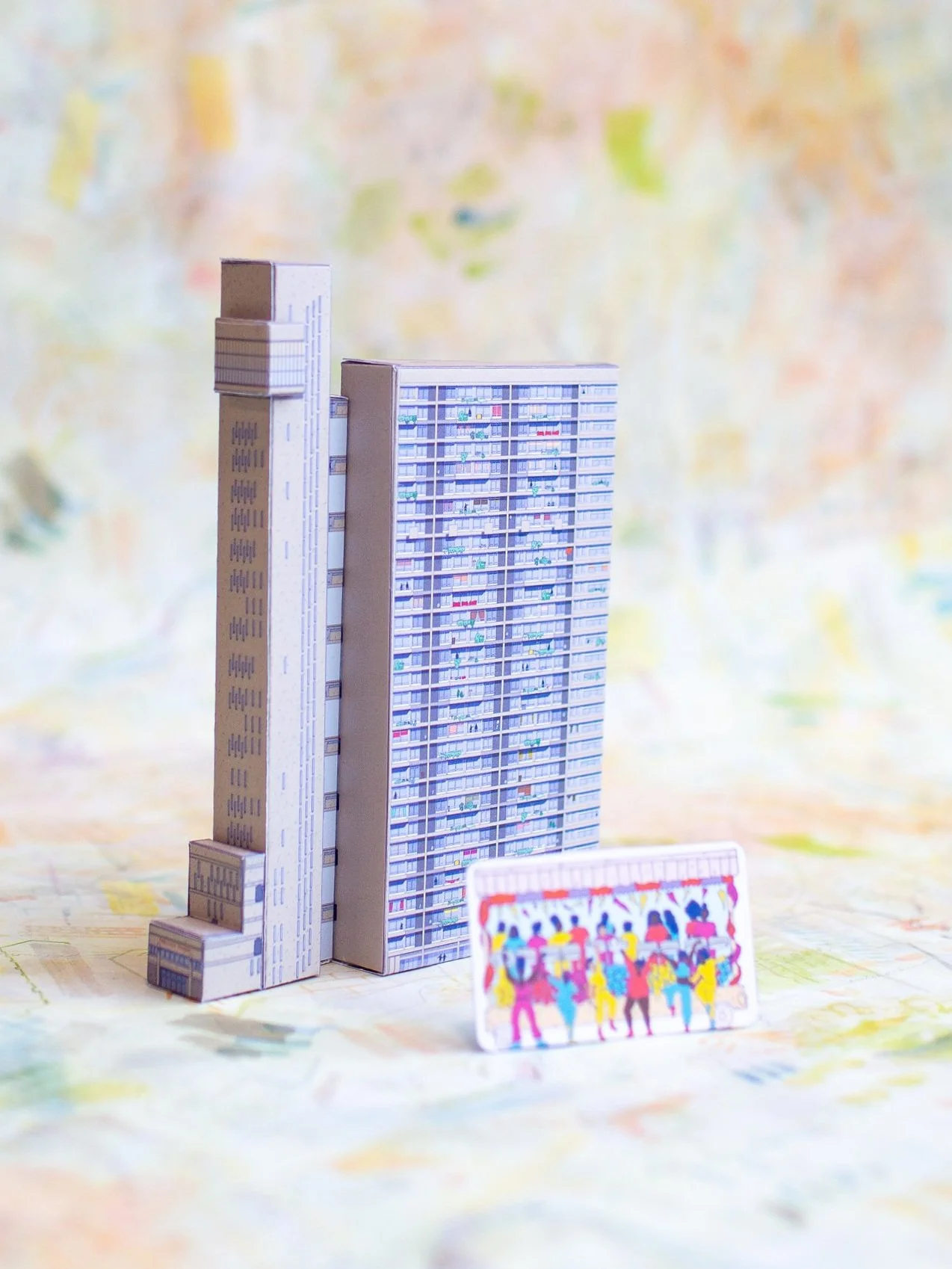Trellick Tower Model
Tenants adore it, Blur sings about it, directors film it, architects study it and now you can build your very own Trellick Tower!
Grade II* listed, Trellick Tower is the latest addition to our popular Model London series of paper models that bring the city to you. Cut, craft and learn about some spectacular London buildings whilst building your own London Skyline.
Trellick Tower is located on the Cheltenham Estate in Kensal Green, and is notably the most prominent and recognisable of Ernö Goldfinger’s designs. However, the now iconic and sought after housing block was not always such a desirable place to live.
The tower, commissioned by the Greater London Council to be rented as social housing, was designed as a replacement for outdated Victorian housing in the area. The building comprises a long, thin body, with a separate lift and service tower linked to the access corridors in the main building at every third storey. Goldfinger was praised by planners and landlords alike for working quickly, competently and being able to squeeze more space out of a site than any other designer. He believed that "the whole object of building high is to free the ground for children and grown-ups to enjoy Mother Earth and not to cover every inch with bricks and mortar.”
Despite this beautiful sentiment and the success of the earlier Balfron Tower in East London, by the time Trellick Tower was completed high-rise apartments and Brutalist architecture were quickly falling out of fashion. Shortly after opening, the tower fell into misuse; Goldfinger advocated for proper security and a concierge to be put in place, but all were declined. In 1984, a new residents’ association was formed of tenants who were committed to fighting for a safe place to live that they could be proud of. It was through their diligence, advocacy and continual pressure that Trellick Tower rightfully became the architectural treasure it is today. To this day it is majoritively social housing and only a minority of the flats are privately owned. This goes to show that through collective care, community organisation and enough resources you can restore a building and create a thriving community.
Net design and illustration: Luc Sanciaume

